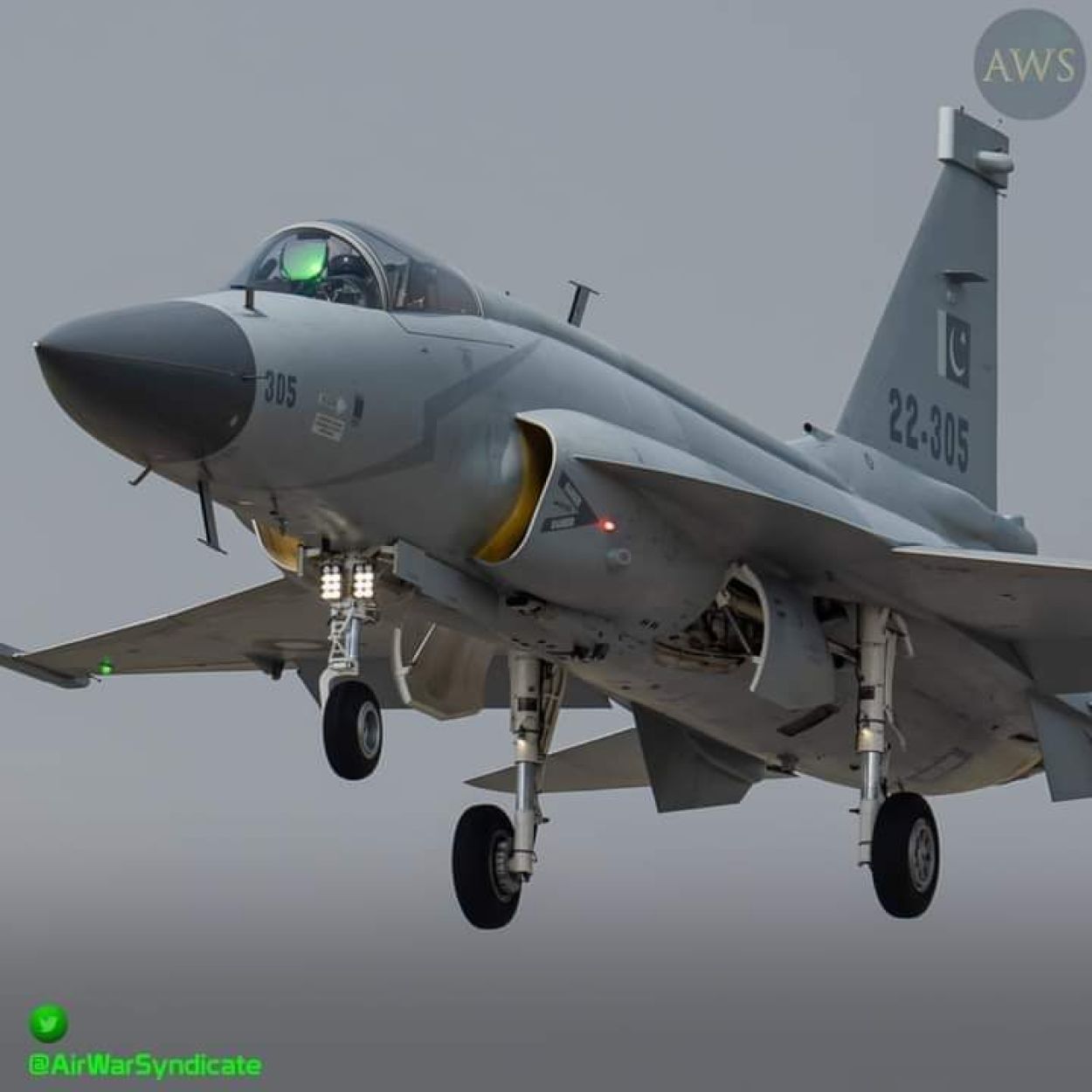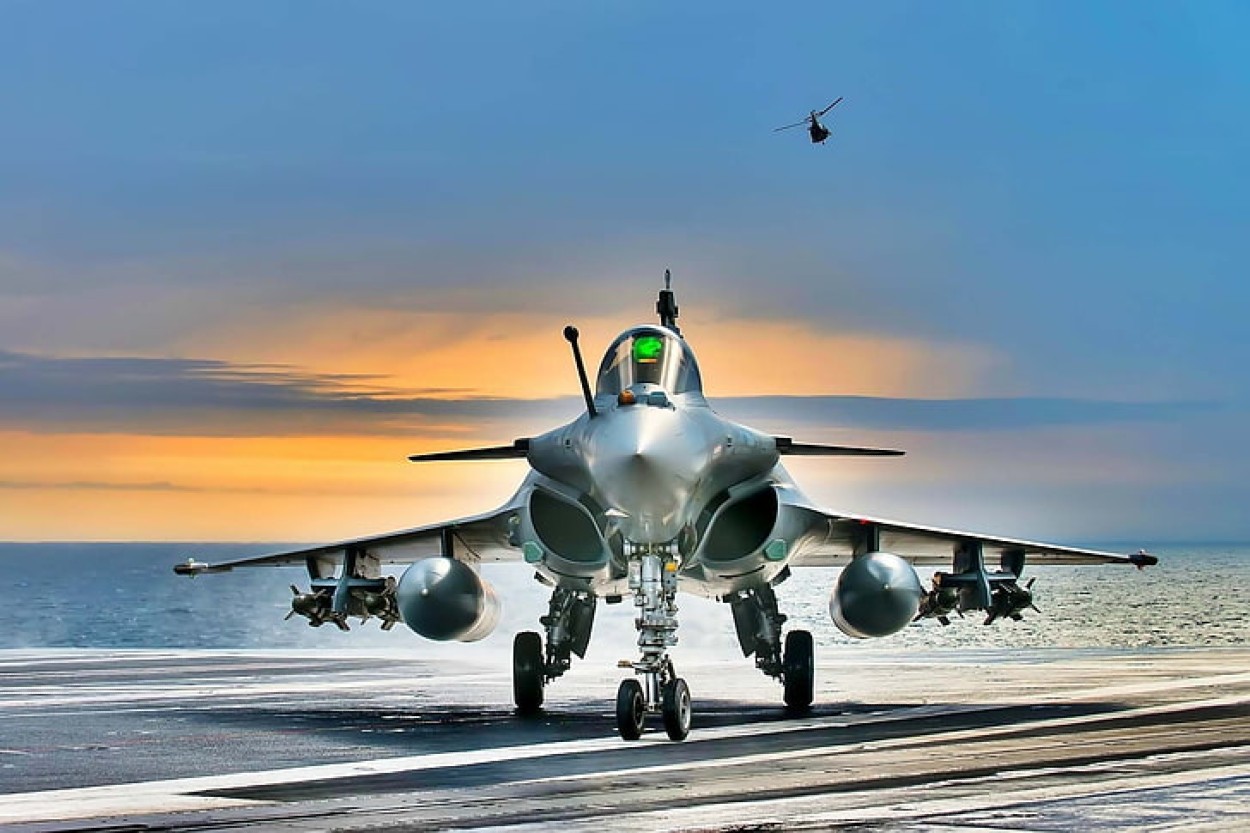The ‘grounded’ fleet of JF-17 in the Myanmar Air Force may be a sore point for Pakistan & China, but a report on how JF-17 pummelled Rafale fighter jets belonging to Qatar Air Force during a wargame in Turkey might have raised Islamabad’s morale.
1st Time In 75 Years, Germany Squeezed Into A ‘Tight Corner’ As Ukraine-Russia War Demands More That Berlin Can Offer
The report is based on the multinational “Anatolian Eagle” exercise conducted in June 2021 between Turkey, Pakistan, Azerbaijan, and Qatar at a Turkish Air Force base. The participating aircraft in the exercise were Turkish F-16s, Pakistan’s JF-17 “Thunder” Block II, Qatar’s Rafale, and Azerbaijan’s MiG-29 and Su-25 “Frogfoot”.
An E-3A Air-borne warning and control system (AWACS) aircraft of NATO participated in the annual exercise.
The report claimed that the exercise allowed the Pakistan Air Force (PAF) to test the mettle of JF-17s, developed in collaboration with China, against the French Dassault Rafale fighter jets of the Qatar Air Force.
The French fighter jet Rafale, meaning ‘Gust of Wind,’ has been the latest induction in the Indian Air Force (IAF), PAF’s arch-nemesis.
The said report quotes “unconfirmed sources” to claim “the kill-ratio of JF-17 aircraft against the Qatar Rafale aircraft was 6:2, meaning the JF-17 Block II aircraft shot down Rafales six times compared to only two losses in air combat simulations during the exercise.” No details about the missions flown have been given.
Dogfight Depends On Pilot’s Tactics
An IAF expert, while conceding that no aircraft is “invincible,” said at the end of the day, it boils down to tactics. “The JF-17 has no technological advantage over Rafale – nada, zilch,” the veteran IAF test pilot, who has flown Rafale fighter jets, told the EurAsian Times while requesting to remain anonymous.
Since the report mentions no details of the said combat, it is difficult to speculate now after almost two years. “In any case, considering a BVR battle scenario, Rafale shall take the thunder out of JF-17 due to its far superior avionics and weapons. In visual dog fights, every pilot can get a chance and claim a ‘kill.’
“These ‘kills’ are difficult to substantiate on the ground because of inherently different combat recording systems on Rafale and JF-17. I feel it’s just a fabricated story to score brownie points against IAF,” said another retired IAF officer.
The JF-17 Thunder combat aircraft is jointly developed by the Pakistan Aeronautical Complex (PAC) and China’s Chengdu Aircraft Industry Corp. It has a Chinese airframe and Western avionics and is powered by a Russian engine.
Troubles Mount For JF-17
Since its induction in PAF in 2007, it has seen many crashes. There have been reports of the aircraft being grounded several times due to cracks in guide vanes, exhaust nozzles, and flame stabilizers.
Myanmar, the first country to buy and induct JF-17 besides Pakistan, was forced to ground its fleet in 2022 owing to technical malfunctions. PAC had sent its technicians and engineers to fix the problem but to no avail.
An independent Myanmar-based media outlet, Narinjara News, reported that these problems were identified to be structural cracks and airframe damage, issues with the Weapon Mission Management Computer, and poor performance of the Chinese-made KLJ-7AI fire control radar, as well as a variety of other technical problems and malfunctions that gave the Myanmar Air Force reasons to declared the JF-17 Thunder fleet as “technically unfit for operations.”
Some experts refuse to accept the JF-17 as a successor to the American F-16s. There is no comparison between the JF-17, a third-generation aircraft, and the Rafale in the IAF, which qualified as a 4.5-generation jet.

Director General of Centre for Air Power Studies (CAPS) Air Marshal Anil Chopra (Retired) said in an article comparing JF-17 and Rafale: “The Rafale is a game-changer in the region, and any comparison with a generation older JF-17 is flawed. Rafale is adding a significant punch to the IAF’s Op capability and will help India dominate the Indian AOR (Area of Responsibility) in the South Asian and Indian Ocean regions.”
Indian Rafale: Cut Above The Rest
The IAF has specific enhancements for its Rafales to meet the South Asian security threat scenario, meaning countering PAF’s combat fleet and that of China’s air force. The modifications included an engine that can start at 12,000 feet altitude. The specification caters to the threat India faces on its eastern border.

Within a few months of its induction, the IAF had Rafale fighter jets armed with MICA air-to-air missiles on their wingtips flew over Ladakh, India’s northernmost sector. Post heightened tension along the India-China border, Indian armed forces have been augmenting capabilities to operate in the region.
It also has a towed decoy system to deceive and thwart incoming missiles and 10-hour flight data recording. When it comes to weapons, the Indian Rafale is a beast.
The Indian Rafale has 14 hard points, allowing it to carry a payload of over nine tonnes. The Indian-specific enhancements include Air-Air Surface Missiles Hammer, SCALP ‘Storm Shadow’ long-range air-ground cruise missile, and Meteor air-air missiles with more range and accuracy.
Meteor gives Indian Rafales the capability to shoot down enemy aircraft over 100 km without crossing the border. It offers multi-shot capability in a heavy electronic countermeasures (ECM) environment with no escape zone of over 60 km.
- Ritu Sharma has been a journalist for over a decade, writing on defense, foreign affairs, and nuclear technology.
- She can be reached at ritu.sharma (at) mail.com
- Follow EurAsian Times on Google News




